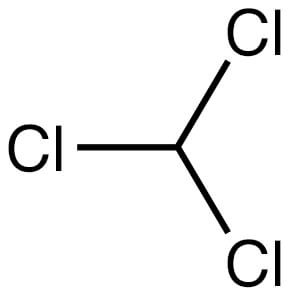Chloroform (CHCl3)
[missing "en.searchResults.oneMoment" translation] ![]()

Chloroform (CHCl3, CAS 67-66-3), also called trichloromethane, is a clear, dense, colorless, and non-flammable liquid with a pleasant odor.
Sweet in taste and insoluble in water, chloroform dissolves easily in alcohol, acetone, gasoline, and other organic solvents. Chloroform was traditionally made from acetone and bleaching powder, but is now created from the photochemical reaction of methane and chlorine.
It is used as a solvent in laboratories because of its relative unreactivity and miscibility with most organic liquids, as well as in organic synthesis and in the purification of penicillin and DNA. Chloroform is used industrially in the preparation of chlorodifluoromethane (HCFC-22), a propellant and refrigerant.
Chloroform was used as an anesthetic in the 19th century, but was found to cause death from paralysis. Chronic exposure to this extremely hazardous substance can result in kidney, liver, and central nervous system damage. Acute exposure of eyes and skin can cause nausea, unconsciousness, redness, and pain; ingestion can lead to abdominal pain and vomiting.


